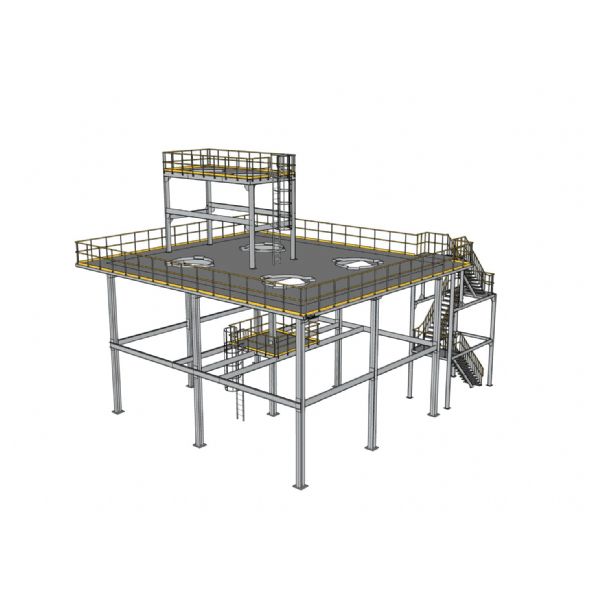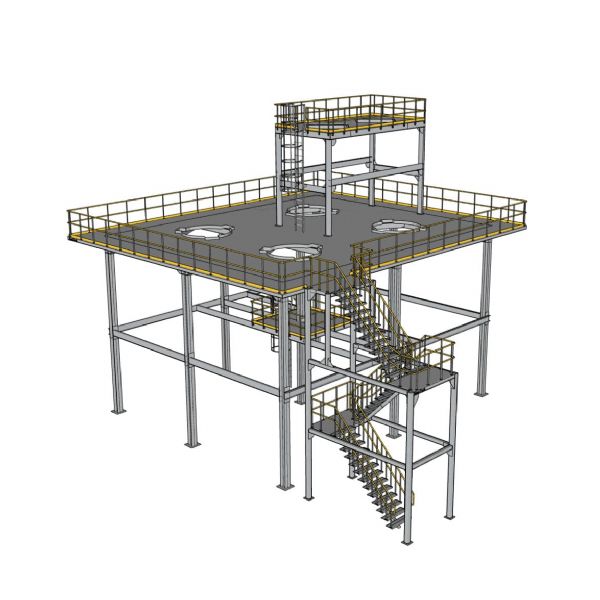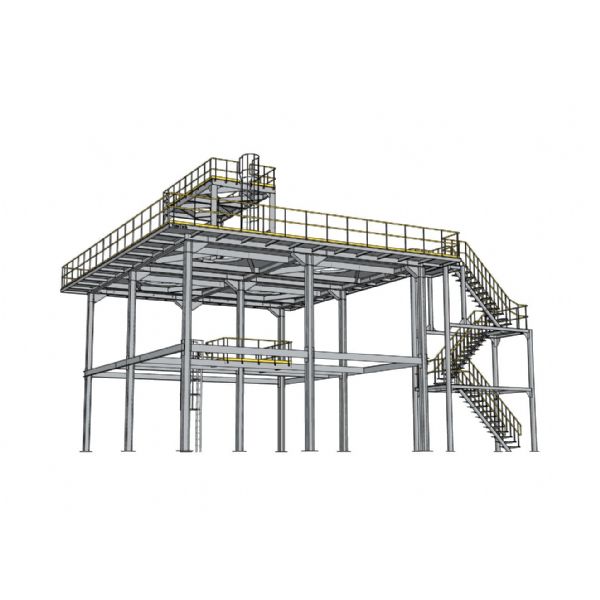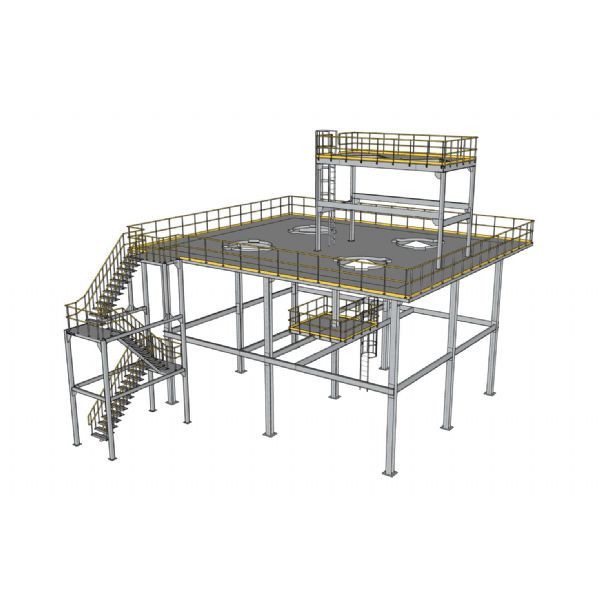Industrial Working Platform 3D Render
Product Advantages
Compared with traditional concrete structures, steel structure industrial platforms offer a higher strength-to-weight ratio, lightweight construction, shorter construction periods, and a smaller spatial footprint. The modular design supports rapid assembly and disassembly, making it suitable for both new construction and renovation projects that demand high efficiency, functionality, and flexibility. Steel components undergo precise machining and anti-corrosion treatment, ensuring excellent durability and environmental adaptability, enabling stable long-term operation even under complex conditions such as high temperatures, humidity, or heavy loads.
Steel structure industrial working platforms are widely used in a variety of settings, including industrial plants, warehousing and logistics, equipment maintenance, and automated production lines. Through rational structural layouts and refined design, they not only meet production operation needs but also facilitate future expansion and maintenance, serving as a key carrier in achieving intensive and intelligent development of modern industrial spaces.
- High Space Utilization and Flexible Structural Layout:
The steel structure industrial working platform adopts a modular design with extremely high spatial adaptability, allowing for flexible layout based on actual production processes and operational needs. Compared with traditional concrete platforms, its components are lighter and have smaller cross-sectional dimensions, effectively freeing up lower-level space without compromising structural load-bearing capacity, thereby increasing the density of storage or equipment placement.
Platform height, span, and openings can be customized according to equipment installation, personnel flow, and material passage, supporting personalized design schemes such as partial layering, multi-platform combinations, local openings, and passage construction. It is especially suitable for industrial environments with limited headroom and complex operations, such as automated production lines, precision assembly areas, or sorting centers. Through a reasonable layout, the steel platform can not only transform single-point operations into multi-point collaborative spaces but also integrate with equipment such as conveyors and robotic arms for coordinated operation, significantly enhancing overall production efficiency and space utilization.
- Strong Load Performance and Adaptability to Complex Conditions:
The steel structure working platform is composed of high-strength components such as H-beams and I-beams, combined with floor decking and steel railing systems, offering excellent load-bearing capacity and impact resistance, capable of handling various high-load working environments. Its static load capacity can be custom-designed according to the platform’s intended use and is commonly employed to support heavy equipment, stacked goods, or high-frequency operation stations. Structural design fully considers dynamic loads, impact forces, and fatigue stress under frequent use, effectively enhancing platform stability and safety.
The ductility and toughness of steel can effectively absorb part of the dynamic load, maintaining structural integrity even under harsh conditions such as vibration, high temperature, high humidity, or chemical corrosion—far superior to traditional concrete structures. Additionally, the platform can be equipped with equipment foundations, damping devices, and anti-slip treatments to provide excellent operational comfort and safety, particularly suitable for long-term continuous operation in high-frequency machining or warehousing and logistics fields.
- Short Construction Period and Convenient Retrofit/Expansion:
The steel structure industrial working platform adopts a factory prefabrication and on-site assembly construction method, effectively shortening on-site working time and avoiding interference with existing production systems. All steel components are processed and anti-corrosion treated in the factory, requiring only assembly and joint connection on site—installation and commissioning can usually be completed within a few days, greatly reducing the construction period.
Compared with traditional cast-in-place concrete structures, this method is cleaner, more efficient, and significantly reduces safety and environmental risks associated with wet operations. Moreover, the platform’s detachable and reusable features provide high flexibility when factory layouts change or functional adjustments are needed. It allows for partial dismantling, relocation, vertical expansion, or retrofitting according to production needs without needing full demolition and reconstruction, saving substantial labor and material costs. This feature is particularly suitable for the fast-paced and frequently upgraded modern industrial systems, offering robust structural support for enterprise project upgrades or transformation processes.
- Excellent Safety Performance and Comprehensive Supporting Systems:
The steel structure industrial working platform fully considers both structural and operational safety during the design phase. All components strictly comply with national or industry standards, and critical joints are connected by welding or high-strength bolts to ensure overall rigidity and stability. The platform surface can be treated with anti-slip textures, fireproof coatings, and anti-corrosion finishes for strong environmental adaptability.
The complete safety system includes: fully enclosed steel guardrails, anti-fall barriers, fire partitions, lightning protection and grounding systems, emergency lighting, and signage guidance, comprehensively ensuring the safety of operating personnel. Stairs and passages are ergonomically optimized, with step height, handrail height, and width all meeting standard requirements to ensure smooth movement. For high-altitude working platforms, elevator lifts, inspection hatches, and safety lock systems can be configured to enhance work-at-height protection. The entire platform system is not only structurally sound and safe to operate but also provides a user-friendly experience, meeting high-standard requirements for various industrial production and maintenance operations.
- Strong Sustainability and Low Maintenance Costs:
The steel structure industrial working platform exhibits excellent sustainability features, with its primary components made of steel—a recyclable material that aligns with the concept of green manufacturing. During use, the platform requires minimal maintenance. Its surfaces, treated with hot-dip galvanizing or spray coating, have excellent rust and corrosion resistance, enabling long-term stable operation in high humidity, heavy oil contamination, or dusty environments. If functional adjustments or dismantling are needed, steel components can be fully recycled and reused, reducing resource waste.
Moreover, the structure features clear load paths and standardized joint connections, making post-use inspections and maintenance highly visible and manageable—beneficial for enterprises to implement regular inspections and structural reinforcements. Over its full lifecycle, the platform’s operating costs are significantly lower than other structural types, with outstanding long-term economic performance. When integrated with modern intelligent monitoring systems, real-time alerts and maintenance guidance on structural conditions can be achieved, further enhancing system safety and operational efficiency—making it a vital carrier for energy-saving, emission-reduction, and sustainable industrial management.
Product Parameters
| Material Standard: | AISI, ASTM, BS, DIN, GB, JIS | Steel: | Q235B (commonly used carbon structural steel, suitable for general construction use) | ||
| Q355B (commonly used carbon structural steel, suitable for general construction use) | |||||
| 45# (suitable for components with high strength requirements) | |||||
| 40Cr (alloy structural steel, suitable for parts bearing heavy loads) | |||||
| Country of origin: | China | Certification: | CE (European Union Standard) | ||
| GB (Chinese National Standard) | |||||
| ISO9001 (International Quality Management System Certification) | |||||
| AWS (American Welding Society Certification) | |||||
| Surface treatment: | Primer/Intermediate/Topcoat (color and coating thickness can be customized according to customer needs) | Material Thickness Tolerance: | ±0.5 | ||
| Hot-dip galvanizing (superior corrosion resistance, suitable for harsh environments) | |||||
| Service scope: | Prefabricated Buildings | Wall & Roof Panels: | Steel plate/FRP plate (customized by customers) | ||
| Life: | 50 years | Paint coating: | Provide a variety of colors and coatings according to design requirements. | ||
| Wind resistance: | 12 levels | Shock resistance: | 8 levels | ||
| Quantity (square meters) | 1 – 2000 | 2001 – 5000 | 5001 – 10000 | >10000 | |
| Estimated time (days) | 26 | 35 | 43 | To be negotiated | |
| Service scope: | Design consultation, node deepening, construction plan, installation guidance | ||||
| Pricing method: | One price, no price increase in the middle, transparent price, a nd avoid hidden fees. | ||||
Technical Specifications
To ensure that we can provide a more accurate quotation and preliminary design, we recommend that you provide the following as much information as possible:
- Building appearance: shape, size, and height
- Material standards: Conform to ISO/ASTM/CE/GB standard certification for materials. Steel generally uses Q235B and Q355B. Special customization is available upon request.
- Building use: such as industrial plants, warehouses, offices, etc., so that we can reasonably recommend roofing and wall materials
- Load requirements: including live load, snow load, wind load, etc. If there are specific design standards or special usage requirements, please indicate them in advance.
- Coating standards: Through the coating standard certification in ISO/ASTM/CE/GB, we have stringent requirements on the protective performance and environmental adaptability of the coating, its compatibility, and its adhesion durability.
- Delivery Standard: Complying with the standard certification of products in ISO/AWS D1.1/CE/GB, we always provide customers with high-quality services.
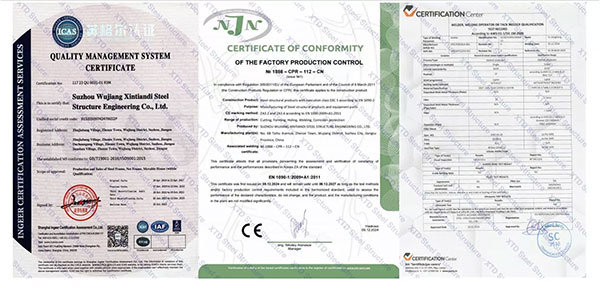
If the above data cannot be provided temporarily, it is not a concern. We will make a preliminary plan for you based on the conventional parameters and further optimize the design in subsequent communication.
Quote Information
Support customized design, welcome to provide drawings for quotation.
Whether you have drawings or not, we welcome cooperation and can provide you with a professional quotation within 1 working day.
- Existing drawings
Please send us your design drawings, and we can provide one-stop service from processing and production, logistics, and delivery to installation guidance. With advanced production technology, complete testing equipment, and a complete technical system, we always provide customers with high-quality and competitive steel structure products.
- No drawings yet
Our design team is experienced and can customize light steel structure buildings according to your needs, including but not limited to gymnasiums, warehouses, workshops, industrial park buildings, halls, and dome building systems.
Professional design team to meet diverse needs
We have a high-level design team that can tailor steel structure solutions according to different project types and customer requirements. To provide more accurate quotations and design solutions, please provide the much information as possible: building purpose, size, load requirements, local standards, etc.
Delivery site photos
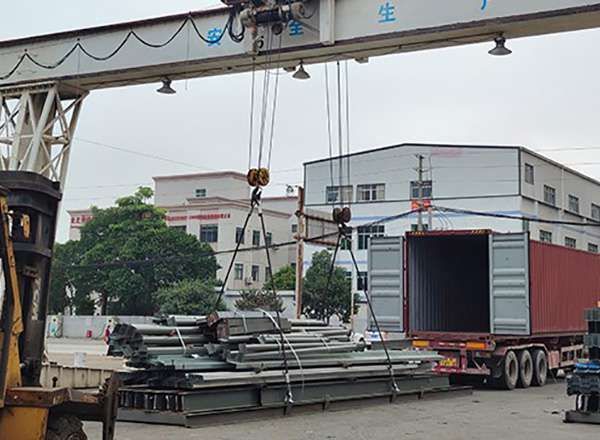 |
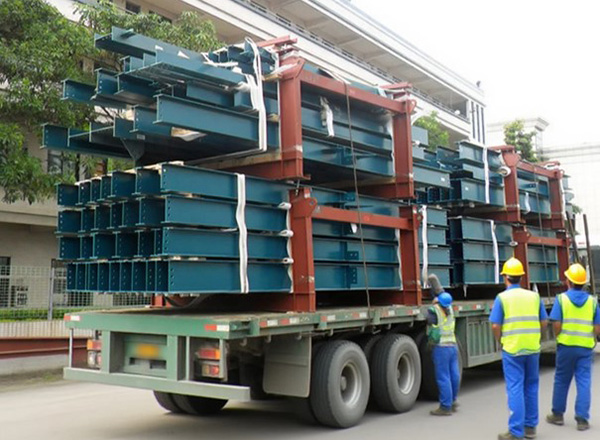 |
| Delivery of Steel Structure Components (Container Packing) | Delivery of Steel Structure in Sections (Loose Parts) |
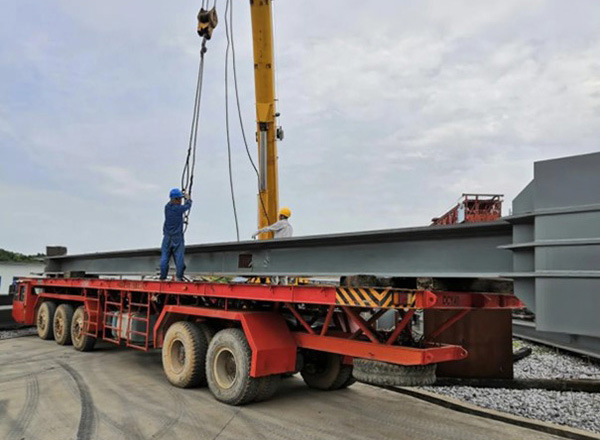 |
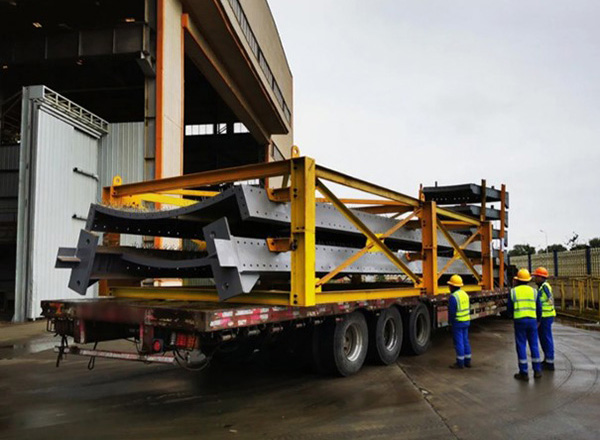 |
| Delivery of Steel Structure Combinations (Mixed Method) | Delivery of Steel Structure Modular Products (Assembled and Packaged in Units) |
Practical Application
Industrial Plants
Warehousing and Logistics
In warehousing and logistics centers, steel structure working platforms primarily serve functions such as spatial layering, material classification, storage, and loading/unloading operations. By configuring multi-level structural platforms, vertical storage space in the warehouse can be effectively expanded, doubling storage capacity without altering the building’s footprint. The platform can be equipped with freight elevators, conveyors, or rail systems, seamlessly interfacing with automated storage systems to shorten material transport paths, reduce manual labor, and improve overall logistics efficiency.
At the same time, the steel structure’s material provides excellent durability and load-bearing performance, supporting pallet stacking, heavy-duty racking, or automated forklift operation. During construction, the platform is easy to install and dismantle, making it suitable for fast-paced, high-frequency warehouse operations, significantly enhancing operational flexibility and adaptability.

